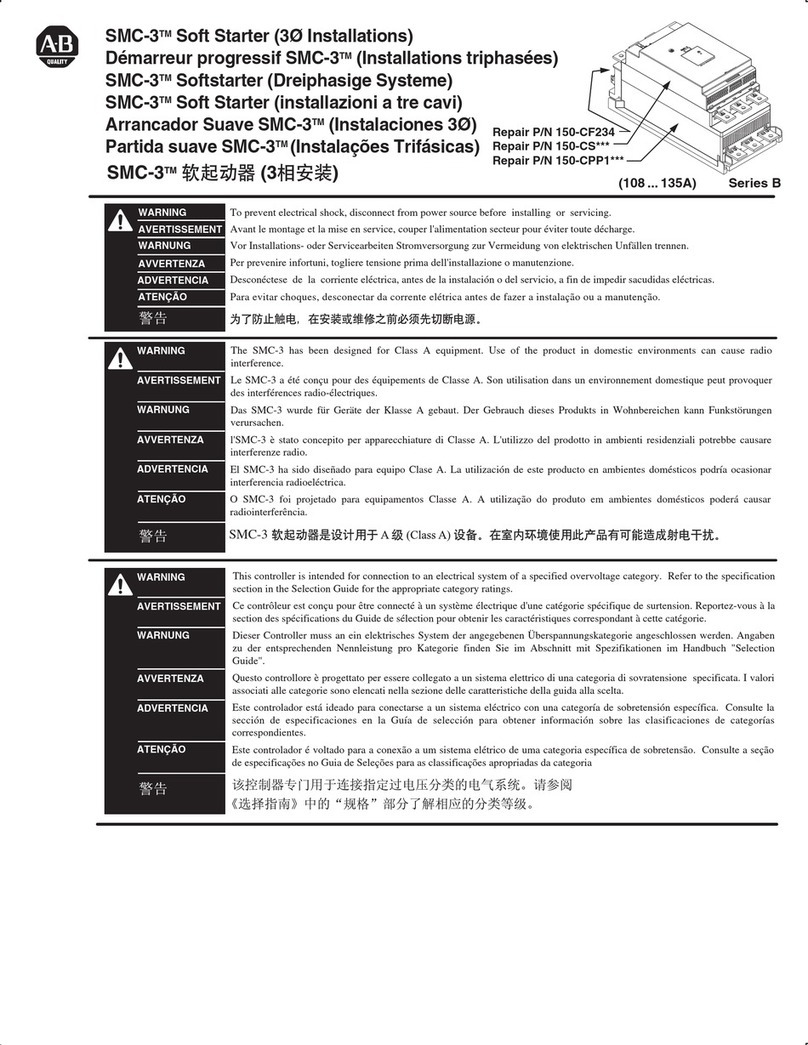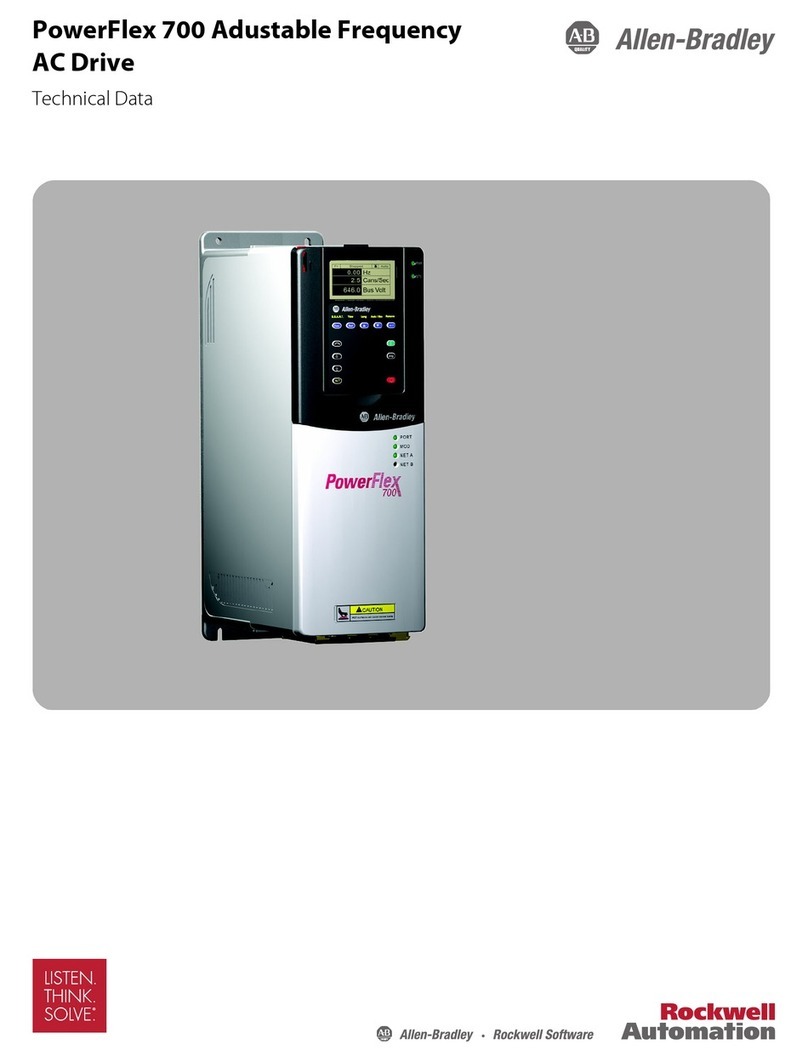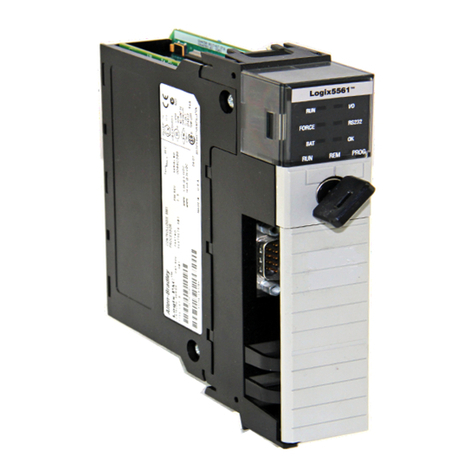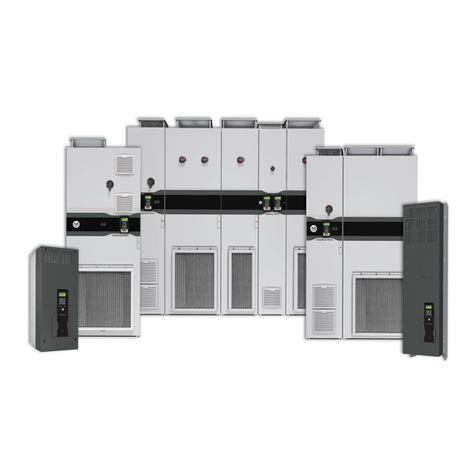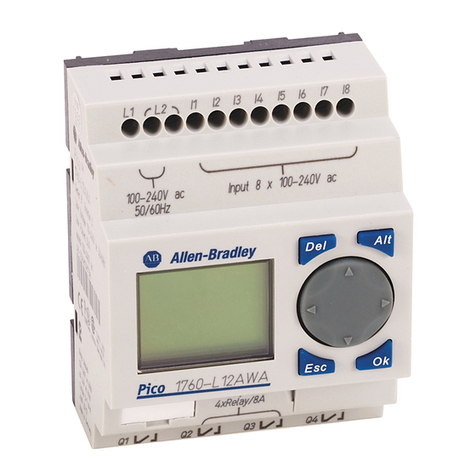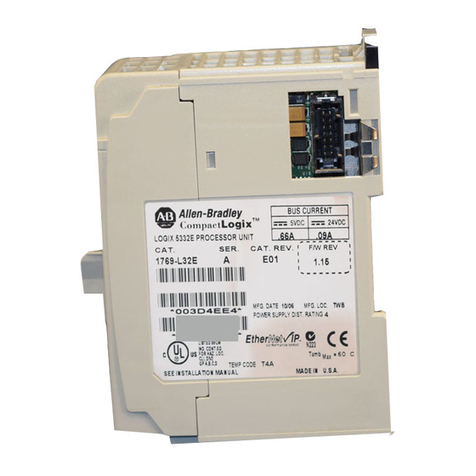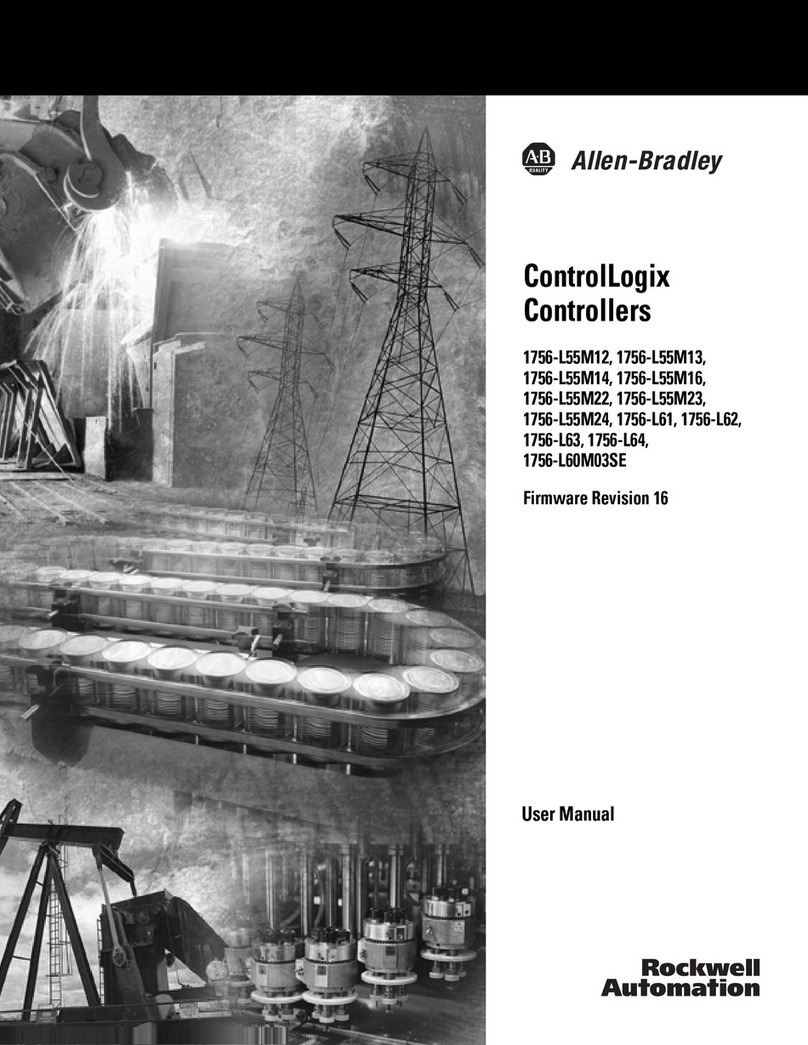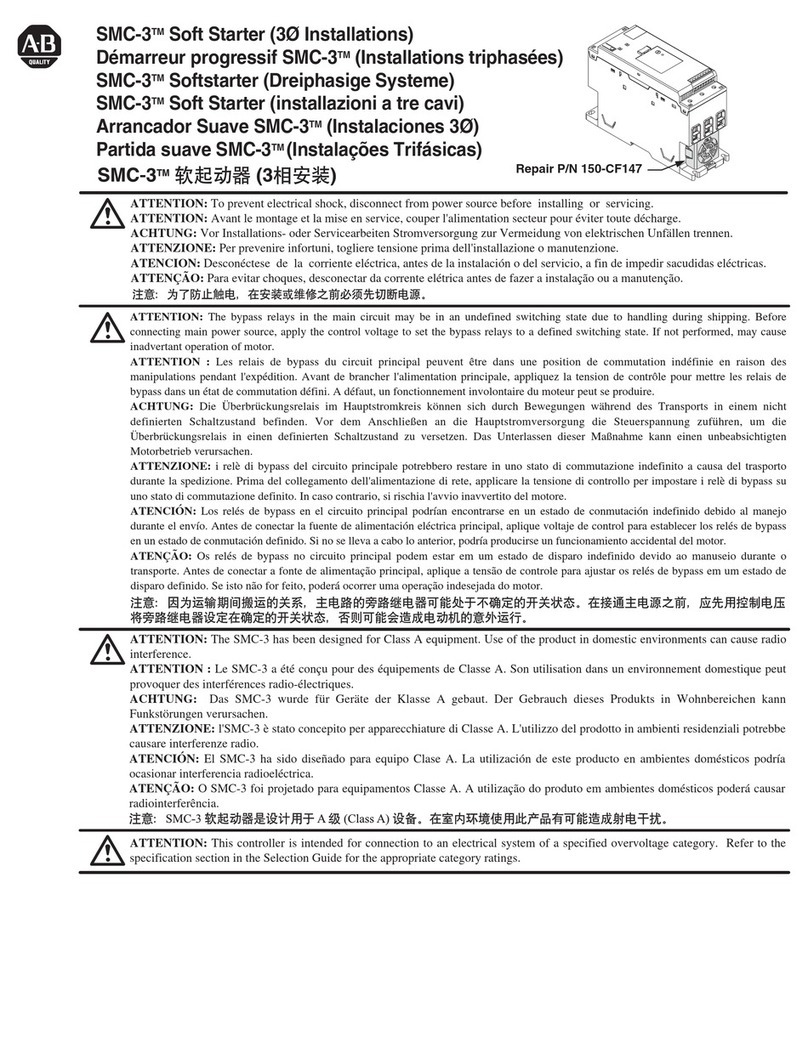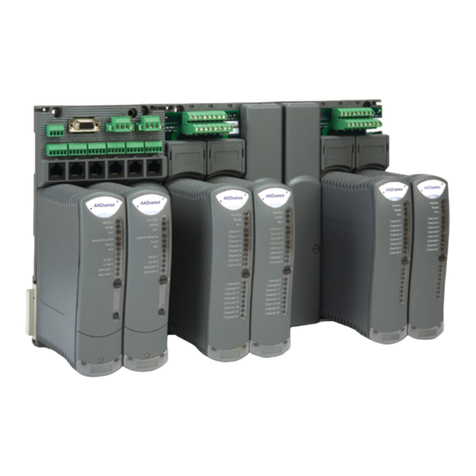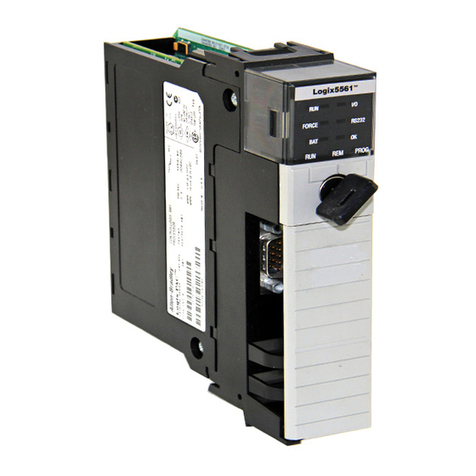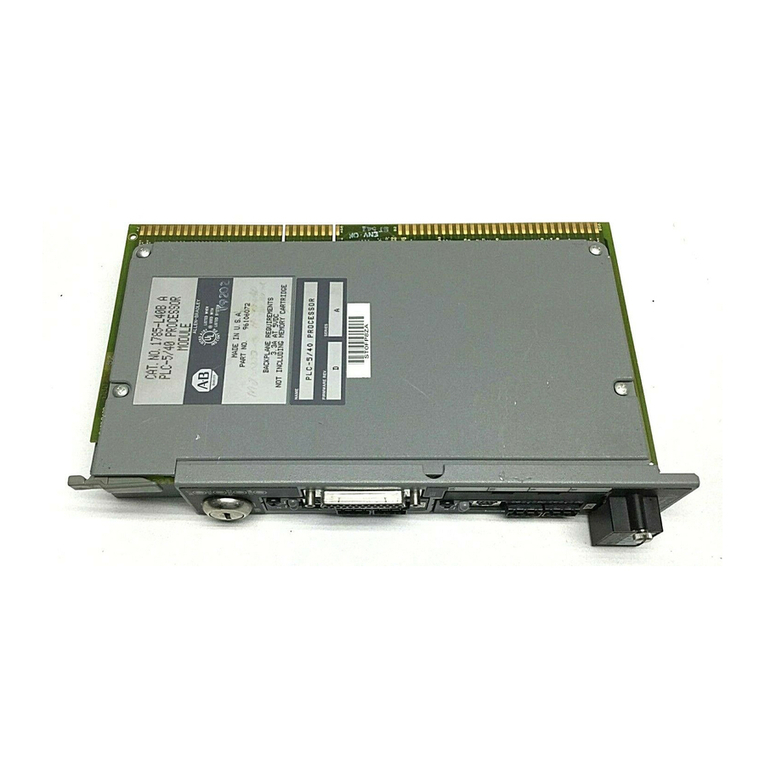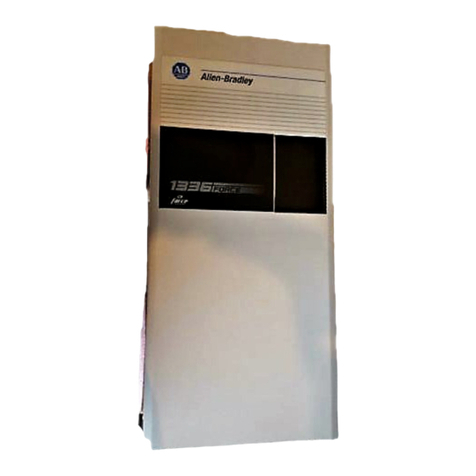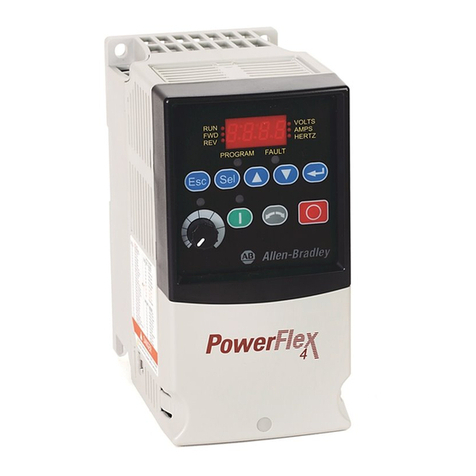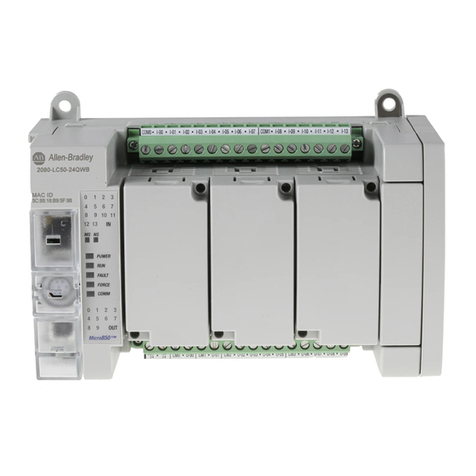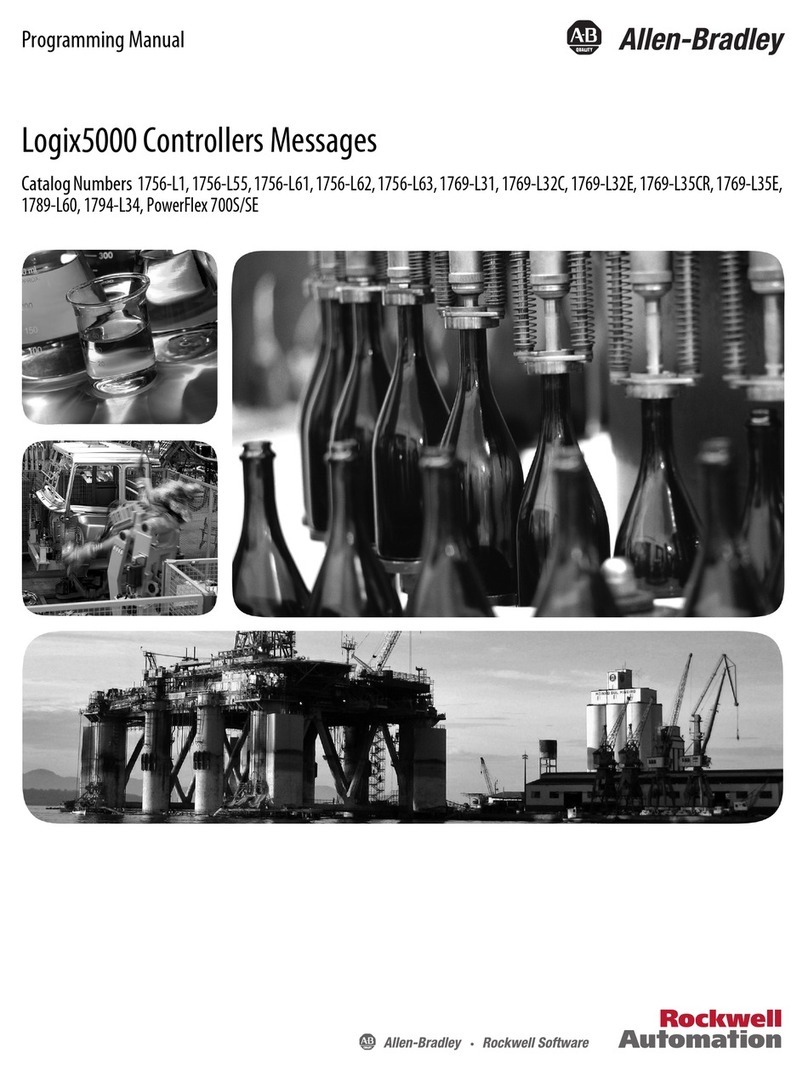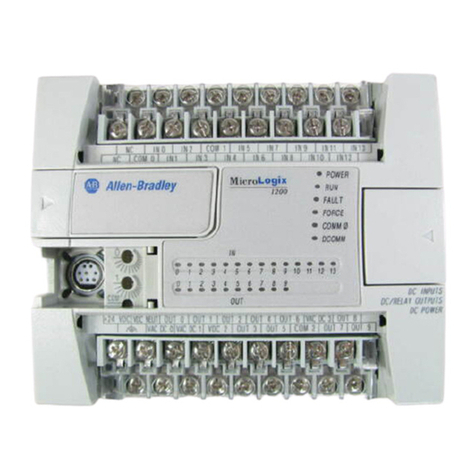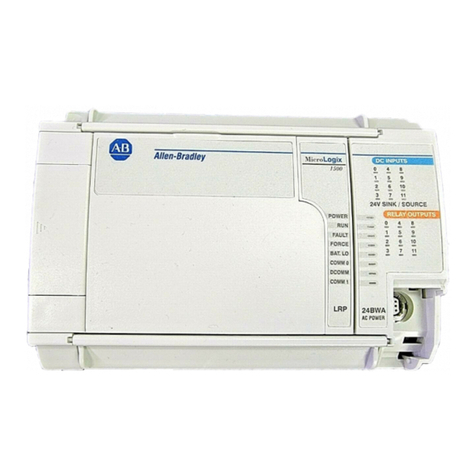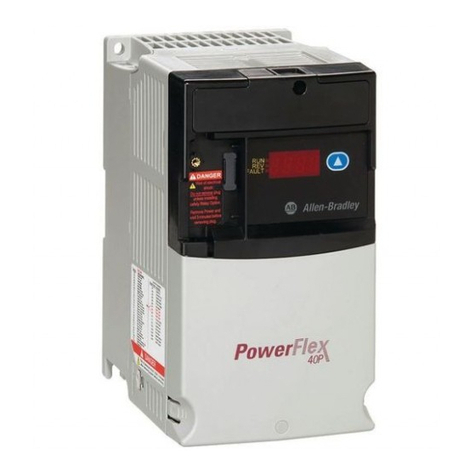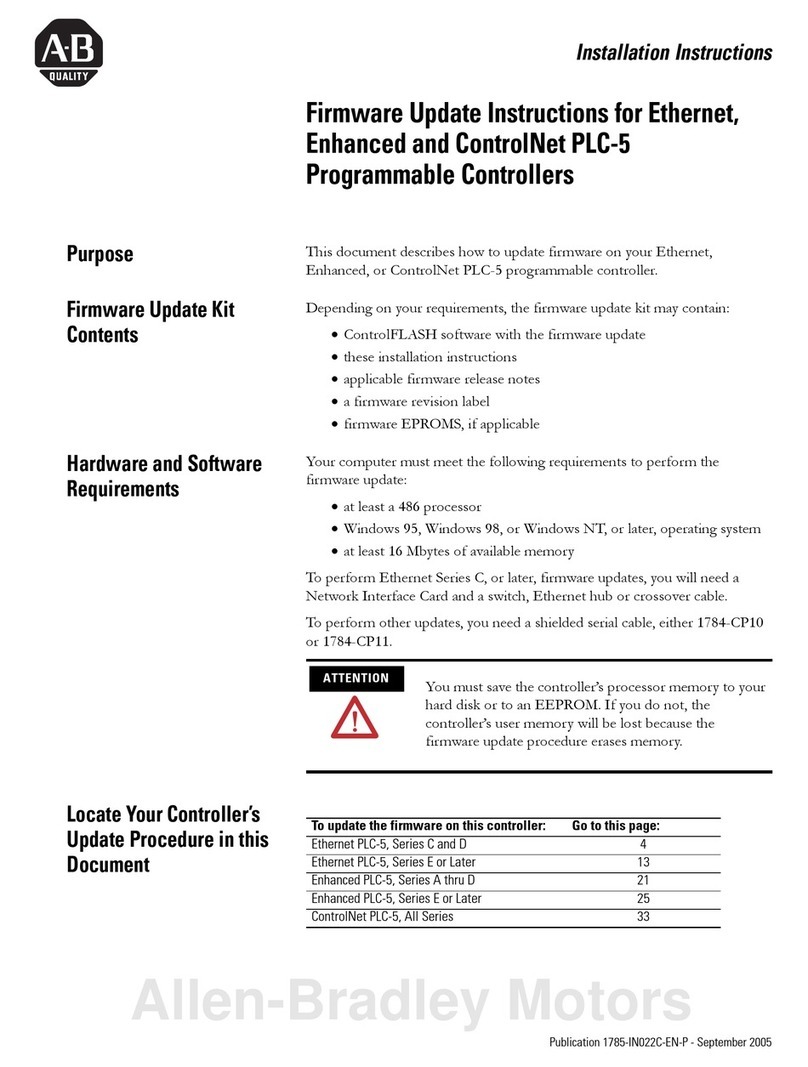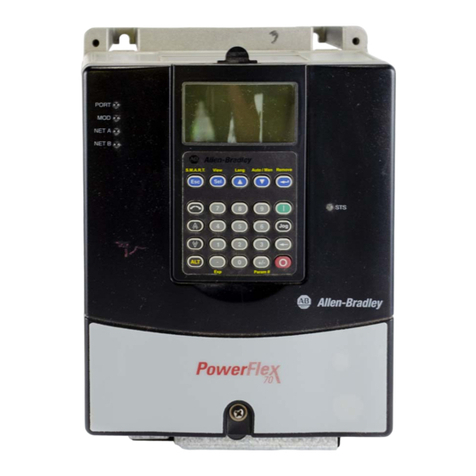
3. Install the replacement contact from the top catch-
ing it from within the contact block assembly with a
finger.
4. Insert the mounting screw and tighten securely
(approximately 14-17 inch pounds).
REPLACING THE STATIONARY CONTACT BLOCK AND
BASE ASSEMBLY-The block and base assembly (item
3) can be removed from a partially disassembled
starter if necessary. First follow steps 1-5 under
DISASSEMBLY.
1. Remove the line wiring and both front and rear
power wiring interconnector assemblies (item 16).
2. The right hand contactor block and base assembly is
connected, by bus, to the overload relay. Loosen but
do not remove the three terminal screws that con-
nect the block and base assembly to the overload
relay. (This is not necessary on the left hand
contactor).
3. Each block and base assembly is secured to the
mounting plate (item 19) by three
#10-32
x
.719"
Phillips pan head mounting screws with washers
(item 15). Remove these screws and the stationary
contact block and base assembly (item 3) can be
lifted up and out while tilting it slightly to the outside
to clear the projection on the mechanical interlock.
4. If new contacts are not being installed, remove
stationary contacts one at a time from the old block
and base assembly and install them in the same
positions in the new assembly (see instructions
under REPLACING CONTACTS. Follow those in-
structions also if installing new contact sets).
5. Install the replacement block and base assembly
and secure with the three screws with washers and
tighten securely (approximately 20-26 inch pounds).
6. Retighten terminal screws to overload relay bus on
the right hand contactor securely (approximately
30-40 inch pounds).
7. Reconnect line wiring and front and rear power
wiring interconnector assemblies.
REPLACING THE OVERLOAD RELAY -The overload relay
(item 13) is connected to both the block and base
assembly (item 3) and load lines.
1. Remove the control wire(s) from the overload relay.
2. Remove the load wiring from the overload relay
terminals.
3. Loosen but do not remove the three terminal screws
that connect the overload relay bus to the block and
base assembly, approximately 3 turns.
4. The overload relay is secured to its mounting plate
by two #8-32 x 1/2
"
pan head mounting screws with
washers. Remove these screws, lift the overload
relay away from the mounting plate, then slide it
down and out.
5. The replacement overload relay will be furnished
secured to a mounting plate. Remove and discard
the mounting plate. install the replacement over-
load relay being sure the bus connects properly to
the terminals on the stationary contact block and
base assembly. Secure the overload relay to the
mounting plate with the two previously removed
screws with washers (NOTE: Place the flat washers
next to the molded plastic part). Tighten securely
(approximately 20 inch pounds).
6. Retighten securely the three terminal screws to
-2-
overload relay bus (approximately 30-40 inch
pounds).
7. Reconnect control and load wiring.
OVERLOAD RELAY TEST MODULE -The overload relay is
equipped with a test module (item 14), on the right
hand side, that allows opening the normally closed
overload contact for test purposes, without tripping the
relay.
1.
To remove use an appropriate size screwdriver. Hold
the blade vertically and insert the screwdriver tip
into the slot, provided on the test module, to the
point where it “bottoms”. Refer to Figure 7on
Page 5.
2. Slide the test module out to the right.
3. Slide the replacement test module into place and
press firmly until it locks in place.
REASSEMBLY
-
The reassembly process is basically
the disassembly procedures in the reverse order.
1.
Insert the yoke into the operating coil. It is keyed and
will fit only one way.
2. Insert the yoke and operating coil into the movable
contact support assembly.
3. Insert all three parts as a unit into the stationary
contact block and base assembly.
4. Replace the coil cover. Check the tie point terminal
for proper position as shown in Figure 2 below.
Tighten the coil cover screws securely (approxi-
mately 14-17 inch pounds).
5. Replace contact block cover and tighten screws
securely (approximately
8-10
inch pounds).
6. Install the auxiliary contact block(s). Refer to de-
tailed instructions on Page 5.
REMOVAL OF MECHANICAL LOAD BALANCER
-
The
movable contact support and armature assembly must
be completely open (the word “OFF” totally visible).
1. Loosen the two captive screws and lift off the
contact block cover.
2.
Remove the load balancer by pivoting the bottom of
the balancer housing away from the contactor and
lifting up and off.
